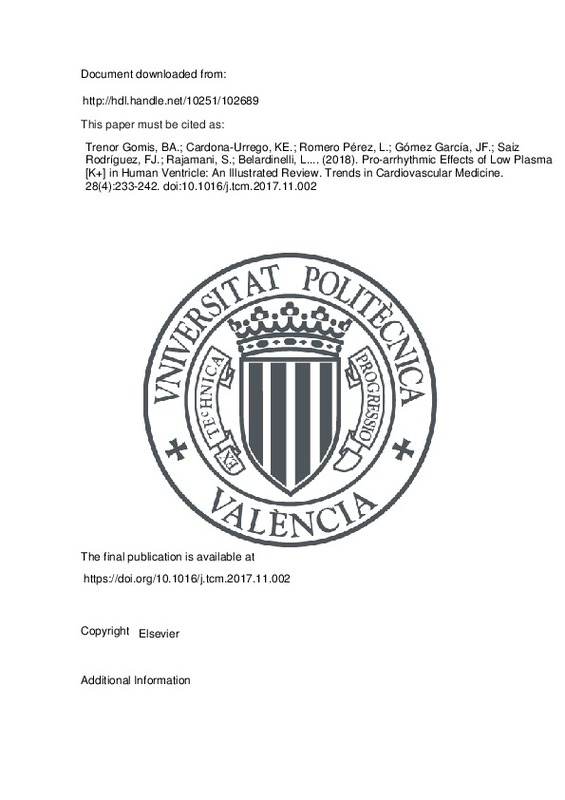JavaScript is disabled for your browser. Some features of this site may not work without it.
Buscar en RiuNet
Listar
Mi cuenta
Estadísticas
Ayuda RiuNet
Admin. UPV
Pro-arrhythmic Effects of Low Plasma [K+] in Human Ventricle: An Illustrated Review
Mostrar el registro completo del ítem
Trénor Gomis, BA.; Cardona-Urrego, KE.; Romero Pérez, L.; Gómez García, JF.; Saiz Rodríguez, FJ.; Rajamani, S.; Belardinelli, L.... (2018). Pro-arrhythmic Effects of Low Plasma [K+] in Human Ventricle: An Illustrated Review. Trends in Cardiovascular Medicine. 28(4):233-242. https://doi.org/10.1016/j.tcm.2017.11.002
Por favor, use este identificador para citar o enlazar este ítem: http://hdl.handle.net/10251/102689
Ficheros en el ítem
Metadatos del ítem
| Título: | Pro-arrhythmic Effects of Low Plasma [K+] in Human Ventricle: An Illustrated Review | |||
| Autor: | Gómez García, Juan Francisco Rajamani, Sridharan Belardinelli, Luiz Giles, Wayne | |||
| Entidad UPV: |
|
|||
| Fecha difusión: |
|
|||
| Resumen: |
[EN] Potassium levels in the plasma, [Kþ]o, are regulated precisely under physiological conditions. However, increases (from approx. 4.5 to
8.0 mM) can occur as a consequence of, e.g., endurance exercise, ischemic insult ...[+]
|
|||
| Palabras clave: |
|
|||
| Derechos de uso: | Reserva de todos los derechos | |||
| Fuente: |
|
|||
| DOI: |
|
|||
| Editorial: |
|
|||
| Versión del editor: | https://doi.org/10.1016/j.tcm.2017.11.002 | |||
| Código del Proyecto: |
|
|||
| Agradecimientos: |
In Valencia, this work was supported by: (i) the “Plan Estatal de Investigación Científica y Técnica y de Innovación 2013–2016” from the Ministerio de Economía, Industria y Competitividad of Spain (DPI2016-75799-R) and ...[+]
|
|||
| Tipo: |
|







![[Cerrado]](/themes/UPV/images/candado.png)


